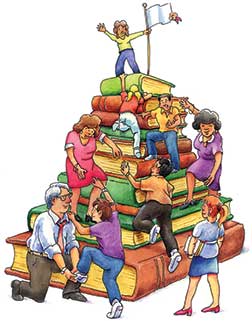Kamakshi Balasubramanian
Training students in high school to read, understand, appreciate, and write about literature offers a variety of challenges.
As with all enquiry-based learning, developing a critical appreciation of literary works also succeeds best when students gain the confidence to ask pertinent questions in a systematic way, so that their understanding emerges out of their personal exploration of the text being studied.
 Using the example of one poem, I shall describe how teachers of literature could develop close reading skills in a systematic way, by focusing on questions. At first, the teacher formulates text-based questions, which the students begin to model. When students learn to read poems closely, analysis of the literary features in the poem becomes a productive tool that leads to a student’s understanding. Such personal exploration and engagement provides the core material of cogent responses, oral and written, retaining the integrity of the student’s unique voice.
Using the example of one poem, I shall describe how teachers of literature could develop close reading skills in a systematic way, by focusing on questions. At first, the teacher formulates text-based questions, which the students begin to model. When students learn to read poems closely, analysis of the literary features in the poem becomes a productive tool that leads to a student’s understanding. Such personal exploration and engagement provides the core material of cogent responses, oral and written, retaining the integrity of the student’s unique voice.
What is close reading? It means more than learning the dictionary definition/definitions of every unfamiliar word and phrase, although vocabulary work is an essential first step in devising a rudimentary paraphrase.
When meticulously completed, vocabulary work prepares a student to answer the basic what, who, when, why, and how questions that establish a literal word-for-word understanding of the general context (socio-political, historical, etc.) of the poem. Once past that stage, the teacher guides the students to work extensively on features unique to the poet’s diction.
The author is an educator and writer with significant experience teaching at secondary and tertiary levels.
